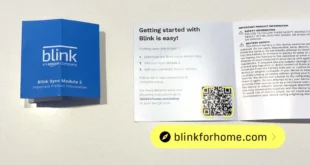The Ultimate Guide to the Best LiDAR Apps for iPhone and iPad
1. What is LiDAR, and Why Do You Need It?
LiDAR (Light Detection and Ranging) technology has revolutionized the way we interact with our surroundings. By emitting pulses of laser light and measuring the time it takes for them to bounce back, LiDAR sensors can create highly accurate 3D maps of the world. This technology has found countless applications, including self-driving cars, robotics, and even augmented reality.
For iPhone and iPad users, LiDAR apps offer a wide range of possibilities. From creating detailed floor plans to measuring objects in the real world, these apps empower you with the power of LiDAR technology right at your fingertips.
2. Choosing the Right LiDAR App
With so many LiDAR apps available in the App Store, choosing the right one for your needs can be a challenge. Here are a few factors to consider:
a. Features:**
Different LiDAR apps offer varying feature sets. Consider the specific tasks you want to accomplish, such as measuring objects, creating floor plans, or scanning objects in 3D.
b. Accuracy:**
LiDAR apps use different algorithms to process raw LiDAR data, which can affect the accuracy of the results. Look for apps that have been tested and proven to provide accurate measurements.
c. User Interface:**
The user interface of a LiDAR app should be intuitive and easy to use. Consider how well the app integrates with your workflow and whether it provides clear and concise instructions.
3. Getting the Most Out of LiDAR Apps
To make the most of LiDAR apps, follow these tips:
a. Use a Tripod for Stability:**
When using LiDAR apps, it’s important to keep your device steady. A tripod will help prevent shaky footage and ensure accurate measurements.
b. Calibrate Your Device:**
Most LiDAR apps require you to calibrate your device before use. This process helps the app adjust for any distortions or errors in the LiDAR sensor.
c. Scan in Good Lighting Conditions:**
LiDAR apps rely on light to create accurate scans. Avoid scanning in dark or dimly lit areas, as this can lead to inaccurate results.
4. LiDAR Apps for Home Improvement**
a. RoomScan LiDAR: Create detailed floor plans of your home, including walls, doors, and windows.
b. MeasureKit: Measure objects, distances, and angles with precision using LiDAR technology.
5. LiDAR Apps for Architecture**
a. Canvas LiDAR: Capture 3D scans of buildings and interiors, ideal for architects and designers.
b. 3D Scanner App: Create high-quality 3D models of objects and environments using LiDAR data.
6. LiDAR Apps for Education**
a. LiDAR Viewer: Visualize and explore LiDAR data from the NASA Goddard Space Flight Center.
b. AR Sandbox: Create topographical models of real-world locations using augmented reality and LiDAR.
7. Comparative Table of LiDAR Apps**
| Feature | RoomScan LiDAR | MeasureKit | Canvas LiDAR | 3D Scanner App |
|---|---|---|---|---|
| Floor Plan Creation | Yes | No | Yes | No |
| Object Measurement | No | Yes | No | Yes |
| 3D Modeling | No | No | Yes | Yes |
| Augmented Reality | No | No | No | Yes |
Conclusion**
LiDAR technology has opened up exciting new possibilities for iPhone and iPad users. With the best LiDAR apps, you can unlock the power of 3D mapping, measurement, and scanning. Whether you’re a homeowner, architect, educator, or simply curious about the world around you, the apps discussed in this article offer a range of solutions to meet your needs. Embrace the power of LiDAR and explore the possibilities of what you can create!
FAQ about Best Lidar Apps for iPhone/iPad
1. What is a LiDAR app?
LiDAR (Light Detection and Ranging) apps use the LiDAR sensor on the iPhone/iPad to capture depth information of the surrounding environment, creating a 3D model.
2. What are the best LiDAR apps for iPhone/iPad?
Some popular LiDAR apps include Measure, RoomScan LiDAR, AirMeasure, and Polycam.
3. What can I do with a LiDAR app?
LiDAR apps can be used for measuring objects and spaces, creating floor plans, scanning objects for 3D printing, and capturing virtual tours.
4. How do I use a LiDAR app?
Most LiDAR apps have a simple interface. Typically, you just open the app, point the device at the object or space you want to scan, and tap a button to start the scan.
5. What is the accuracy of LiDAR apps?
The accuracy of LiDAR apps varies depending on the app and the device model. In general, LiDAR apps can achieve accuracy within a few centimeters.
6. Do LiDAR apps work on all iPhone/iPad models?
No, LiDAR is only available on certain iPhone and iPad models, such as the iPhone 12 Pro, iPhone 13 Pro, and iPad Pro (2020 and later).
7. What is the difference between a LiDAR app and a depth camera app?
Depth camera apps use the TrueDepth camera on the iPhone or iPad to estimate depth, while LiDAR apps use a dedicated LiDAR sensor for more accurate and detailed depth capture.
8. Can I export the scans created with a LiDAR app?
Yes, most LiDAR apps allow you to export the scans in various formats, such as USDZ, PLY, OBJ, and STL.
9. Are there any free LiDAR apps?
Yes, there are several free LiDAR apps available on the App Store, including Polycam Lite and Canvas – 3D Modeling.
10. What are some creative uses for LiDAR apps?
LiDAR apps can be used to create 3D models of people, objects, and environments for art, design, education, and entertainment.



